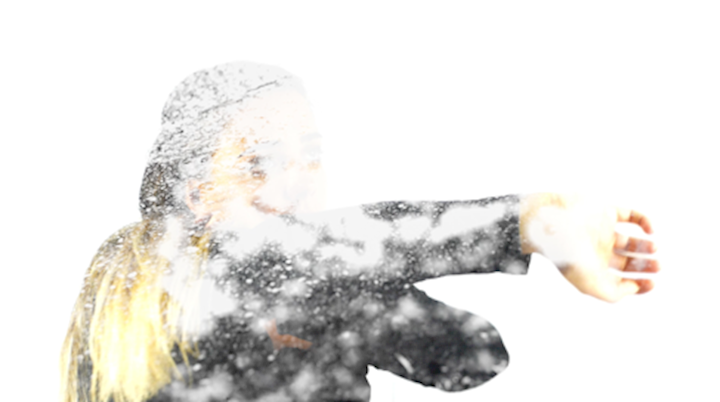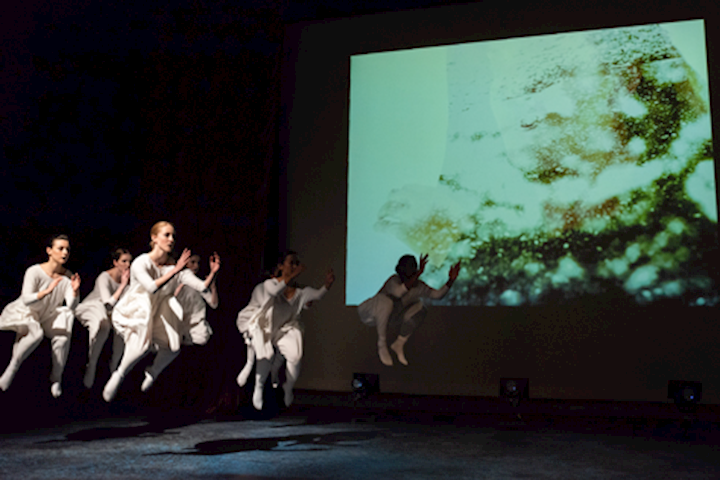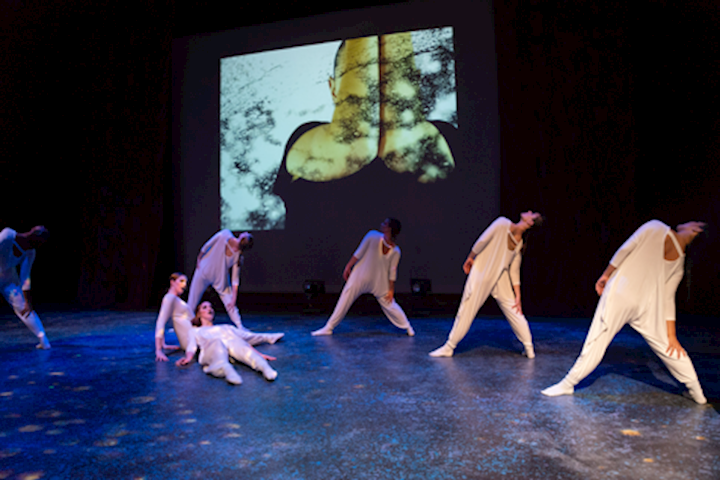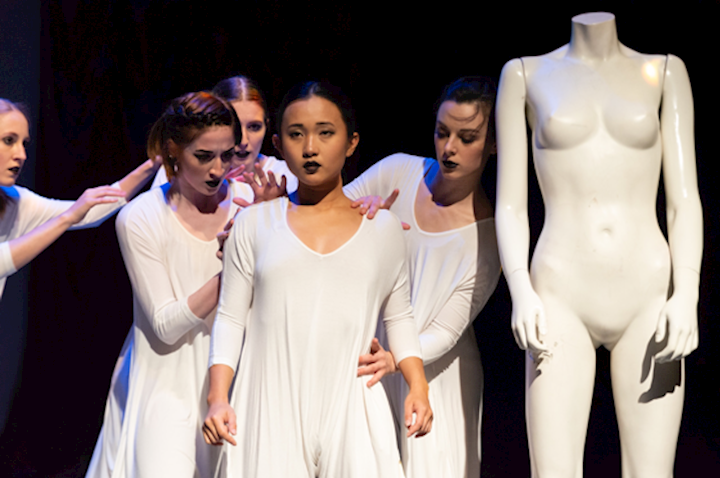Epoch: A Visual Essay
The following is research from the film, and subsequently the live performances of Epoch (2018). Filmed and Edited by Britt Whitmoyer Fishel, choreographed collaboratively between Fishel and the dancers, and performed by Kaitlin Davis, Emi Murata Ferguson, Christina Leamon, Raina Mitchell, Bekah O’Toole, Sarah Stokes, and Gray Stoner. Epoch explores a feminist perspective of socioeconomic and biosocial determinants of behavior, health, and longevity.
Research
In my observations and personal experience, our society frequently goes through the ebb and flow of solidarity, divisiveness, rebellion, and liberation. It can feel like a magnetic pull, or the tides of the ocean, but the commonality has become a something that people may not even realize themselves. Scientifically, and medically, you are in fact connected to the people around you. Not only that, but the effects of your network and the community around you can subconsciously change your decision making, alter your health, and ultimately impact the duration of your lifespan. As I began the deep dive of this research to inform my work, Epoch, I started to ask myself: In a climate of independence and liberation, how are we tied to others, and is it truly without choice?
I began with William Farr, a British epidemiologist. I was most interested in his research on the “conjugal condition,” as he named it. He began testing the possibility of a correlation between longevity and matrimony. Farr examined three categories of adults: married, celibate and widowed, sifting through birth, death, and marriage records and then factored-in their mortality rates. Farr found that married people appeared to lead longer, healthier lives than those of the unmarried people. Specifically, Farr found that the unmarried people died from disease in greater numbers than their those who were married, and that widowed individuals did even worse (Parker-Pope 2010).
Farr’s research, conducted in 1858, excluded several present relationship patterns, i.e.: divorce, lgbtq relationships, etc., which could in theory change the outcome today (Parker-Pope 2010). However, the idea that we as individuals and we as a society could be affected by relationships and human connection, to the point of varying mortal longevity, was intriguing.
In search of more contemporary studies, I leaned in on the research of Nicholas Christakis. Christakis, a sociologist and physician, is known for his research on social networks and on the socioeconomic and biosocial determinants of behavior, health, and longevity. He did a TED Talk on the subject in February 2010 and his research not only pokes holes in Farr’s research, which limits the connectivity to husbands and wives, but also he argues that the connections are not restricted to pairs of people only. He believes that we are embedded in physical social networks, and no matter how vast they may be, they can affect our lives. As an example, he uses obesity as a catalyst and presents three causes as to why this appears to happen (2010):
- Induction: As one person gains weight, it causes others in their social network to gain weight, spreading the catalyst from person to person.
- Homophily: One person forms a tie to another because they share a similar body size; “birds of a feather flock together.”
- Confounding: People are sharing a common exposure to something, like a gym that makes them both lose weight, or fast food that makes them both gain weight.
These three biosocial contagions became very important in the process of creating choreography for Epoch. I was able to use gesture and large movement phrase work as the substitute catalyst and play with flocking, reactionary, and transference ideas in space.
What was most intriguing to me about Christakis’ research was that he was able to visually map the social spread. He was able to show video animation of dots (representing people) and ties (representing the relationship), and through this animation, you watch as dots come and go (birth and death), ties form and break (friending, de-friending, marriage, divorce, etc.), but the network itself never dies. It became clear to me that the mental, physical, social tie that we have to others is larger than us. The decisions we make while we are in it, will live on long after we are gone; In Christakis’ words: “…it has a memory…” (2010).
Seeing that play out in visually, aided in the fluidity of how Epoch was created. However, I questioned the gender statistics of these studies. Where they testing an equal number of men and women, or did the gravity of the pendulum pull one way over another?
I did find out that Christakis’ research included only persons older than 21 years of age at any observation point and at the inception of the study, 53% were women. However, going back to review Farr’s research, it was much harder to find information in regard to his statistical parameters for his study. I returned to Tara Parker-Pope’s article, Is Marriage Good for Your Health (2010) and was lead to several additional researchers isolating women in their studies.
One study in particular that stood out was the research of immunologist Ronald Glaser and clinical psychologist Jan Kiecolt-Glaser. Seemingly a more contemporary version of William Farr's research, they look at marriage and health correlations.
In a paper entitled Stress, Personal Relationships, and Immune Function: Health Implications (1999), the Glasers recruited 76 women, half of whom were married and the other half of whom were separated or divorced. They measured the women’s immune-system responses, "tracking their levels of antibody production and other indicators of immunity strength" (Parker-Pope, 2010). They then placed this research against questionnaires of relationship happiness. The results showed that the women in unhappy relationships (or with their relationship status) had weaker immune responses.
The Glasers' paper goes on to include additional experiments between both men and women, but this study in particular is felt jarring. Plainly said, it seems women are less happy and less healthy when they are alone. I would be curious to see the blood results if the study had been done with the opposite gender. Would men also be less happy and healthy, given the same circumstances? Why was this study for women only? Is a woman’s health and stability dependent on another? Is it that black and white?
Application
I first carried this research into Epoch’s rehearsal process. I started with a gesture movement phrase to represent the catalyst traits or ideas being passed in our network. This movement was violent, frantic, and repetitious.
It became clear through the process that I wanted a “Patient-Zero,” who would anchor the passing of traits or dependent qualities throughout the work. The idea was in similar to Christakis’ (2007) “dots” and “ties” animation; the linchpin would have symbolic ties to every dancer (dot) in the space. Patient-Zero became a six-foot-tall, white, headless mannequin.

In collaboration with the dancers, we created relationships and duets with the mannequin as well as with each other, generating expanded, full body versions of the original gesture phrase. In addition to these ideas, we played with the three causes of contagion from Christakis (2010): Induction, Homophily, and Confounding. As previously stated, we created travelling flocking patterns, reactionary movement phrases, and transference phrase work, where each dancer is “infected” with the previous dancer’s movement, until it has taken over all of them.
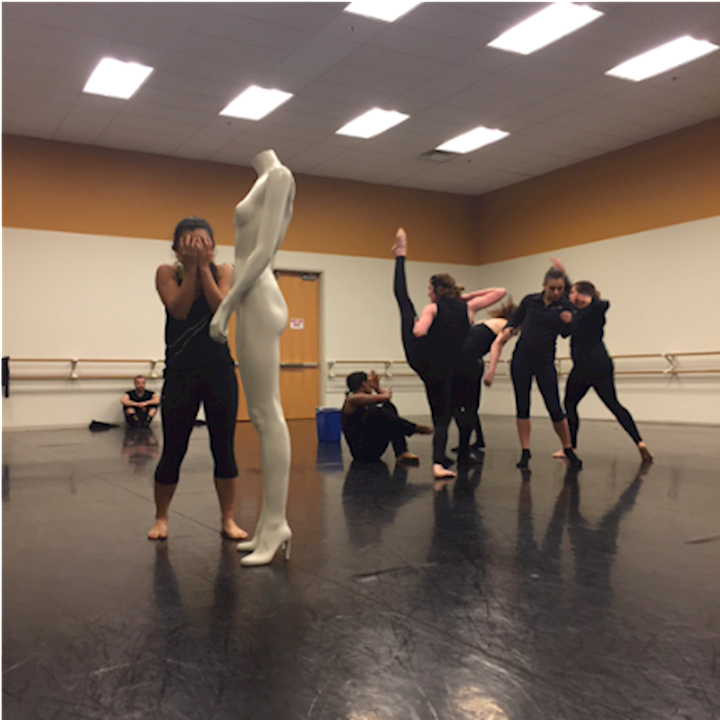
As Epoch continued the pattern of “expand and spread,” and as the mannequin started to become a focal point of the work in rehearsals, it became clear that the association of “women” would be attached to the piece. All of the dancers were women, my perspective and approach is as a woman, and while I was hesitant to include research ideas from the women-only studies I was reading, it began to naturally seep through.
I took this as an opportunity to then play with the idea of fighting the habits: to give my dancers their individual qualities and break-out moments; showcasing the quicksand of dependency, but allowing them to fight their way out. As noted in the research, however, the network is cyclical; it doesn’t have an ending. It lived before us, and will live on after us.
The distribution of Epoch became one more node in the research of spreadable reach. The consumption of the work had its own “network” and adapted to the environment it was in, which is not unusual, but noteworthy to the argument that just as humans, our art follows the same path of spreading, transference, adaption, and that ideas come before us and live on after us.
The original film(s) were made for a Pop-Up Projection Pavilion (PUPP), which featured five screens that act as video panels or transparencies for in-depth, multi-image creations. Each dancer had their own screen for the project, keeping their individual personas separate, but still passing traits and dependencies down the line of the videos.
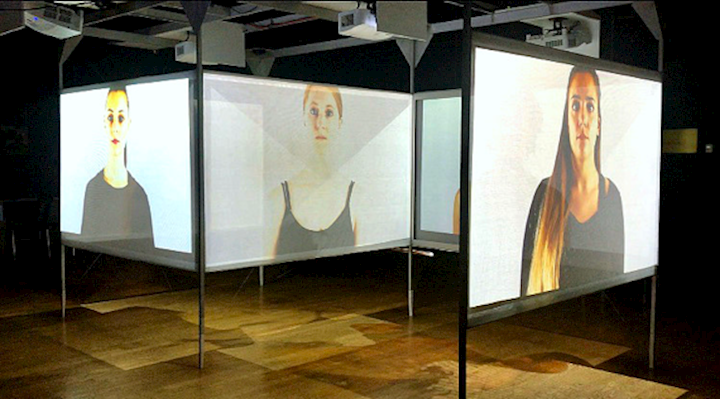
Through editing the five films, I played with the dancers’ identities through the affixed habits and traits, represented in their movement. However, I also incorporated double exposure to the films, as a tool to showcase the fight for individualistic brain and territory.

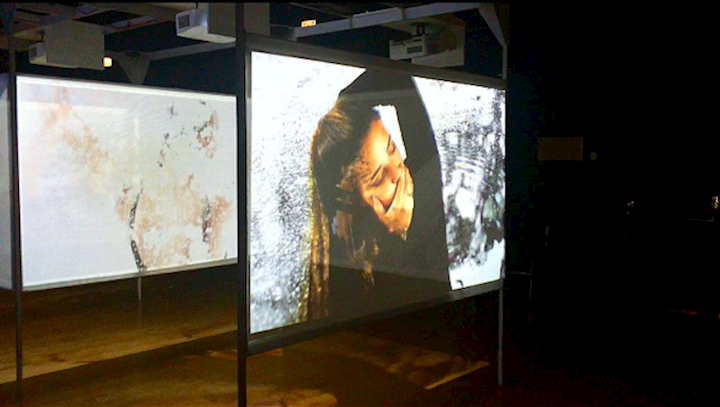
The five films were then condensed into one, taking all of the elements from the expanded five screens, and re-choreographing through the edit. It became a much faster progression of the dancers’ confined identity, frantic gestures, and transference through the use of double exposure.
Lastly, Epoch was adapted to a live performance, incorporating the images through projections behind the dancers on stage.
This greatly changed the perception of the work. The transitions were more clear, the mannequin became a much stronger focal point, and the emphasis was more on the relationships and less about the individual beings.
The performance ends similarly to the film, where there is no concrete ending. The lights fade, while the dancers are still in motion, representing the idea that the network and the cycle is never ending. It lives on.
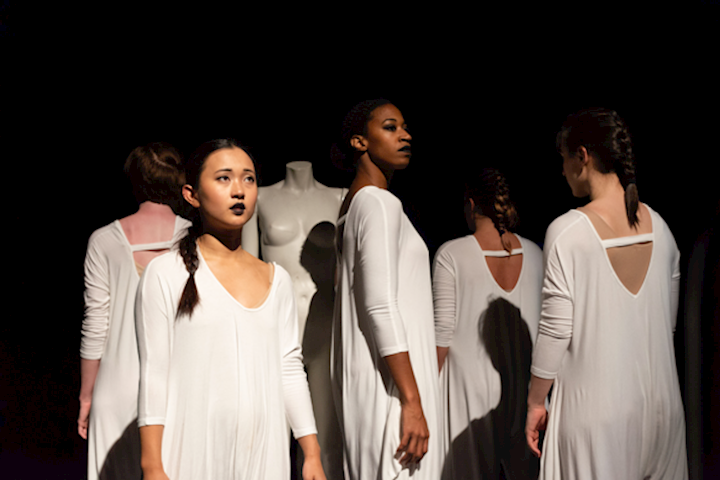
Works Cited
Christakis, Nicholas. "The hidden influence of social networks." Lecture. TED. February 2010.
Christakis, Nicholas A., and James H. Fowler. 2007. “The Spread of Obesity in a Large Social Network over 32 Years.” New England Journal of Medicine, 357: 370-379. www.nejm.org/doi/pdf/10.1056/NEJMsa066082.
Kiecolt-Glaser, Janice K. 1999. “Stress, Personal Relationships, and Immune Function: Health Implications.” Brain, Behavior, and Immunity 13 (1): 61–72. doi:10.1006/brbi.1999.0552.
Parker-Pope, Tara. “Is Marriage Good for Your Health?” The New York Times, 14 April 2010. www.nytimes.com/2010/04/18/magazine/18marriage-t.html.
Susser, Mervyn, and Abraham Adelstein. 1975. “An Introduction To The Work Of William Farr 1.” American Journal of Epidemiology 101(6): 469–476. doi:10.1093/oxfordjournals.aje.a112117.
Whitehead, M. 2000. “William Farr's Legacy to the Study of Inequalities in Health.” Bulletin of the World Health Organization. 78–87. www.who.int/bulletin/archives/78(1)86.pdf.
